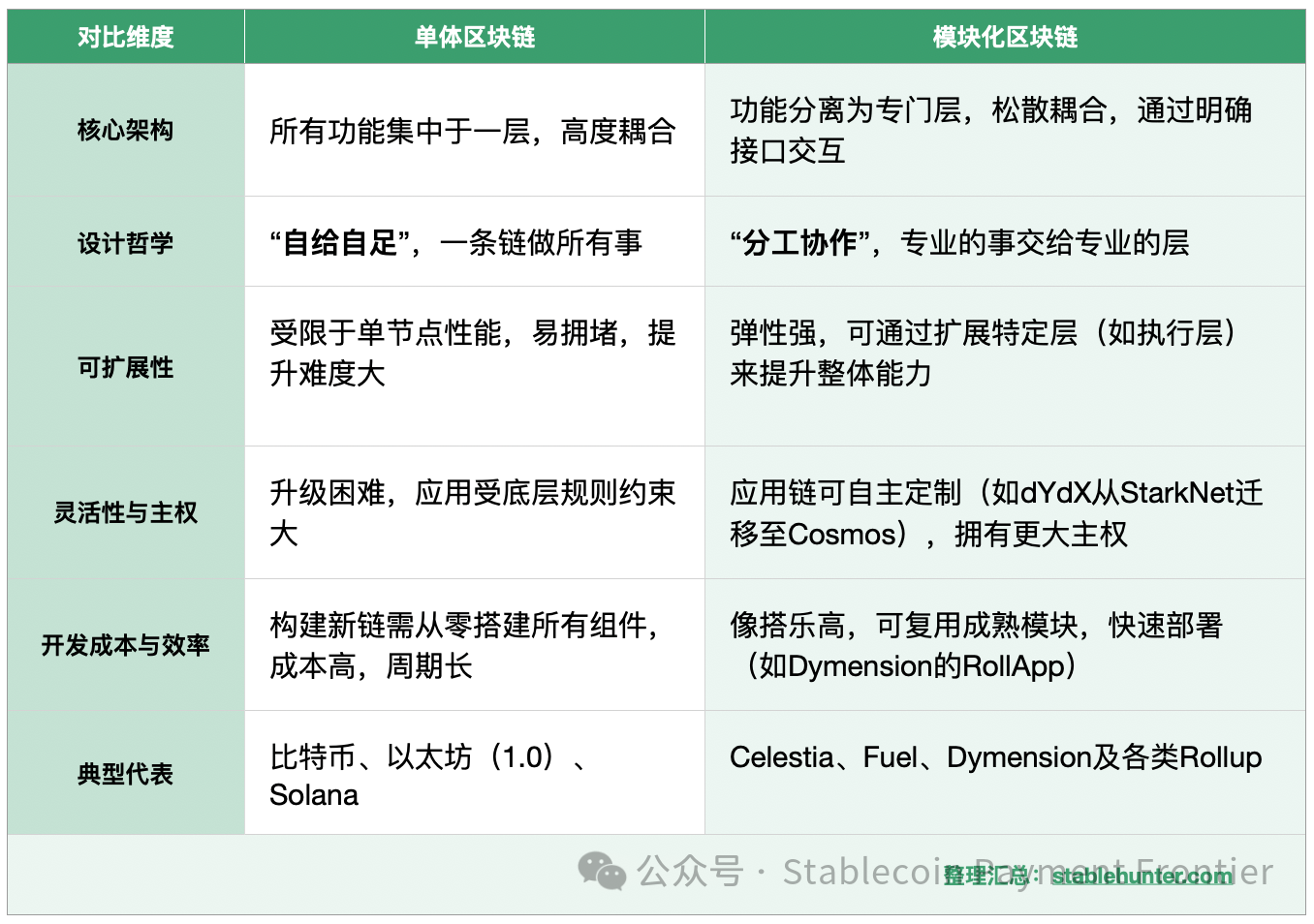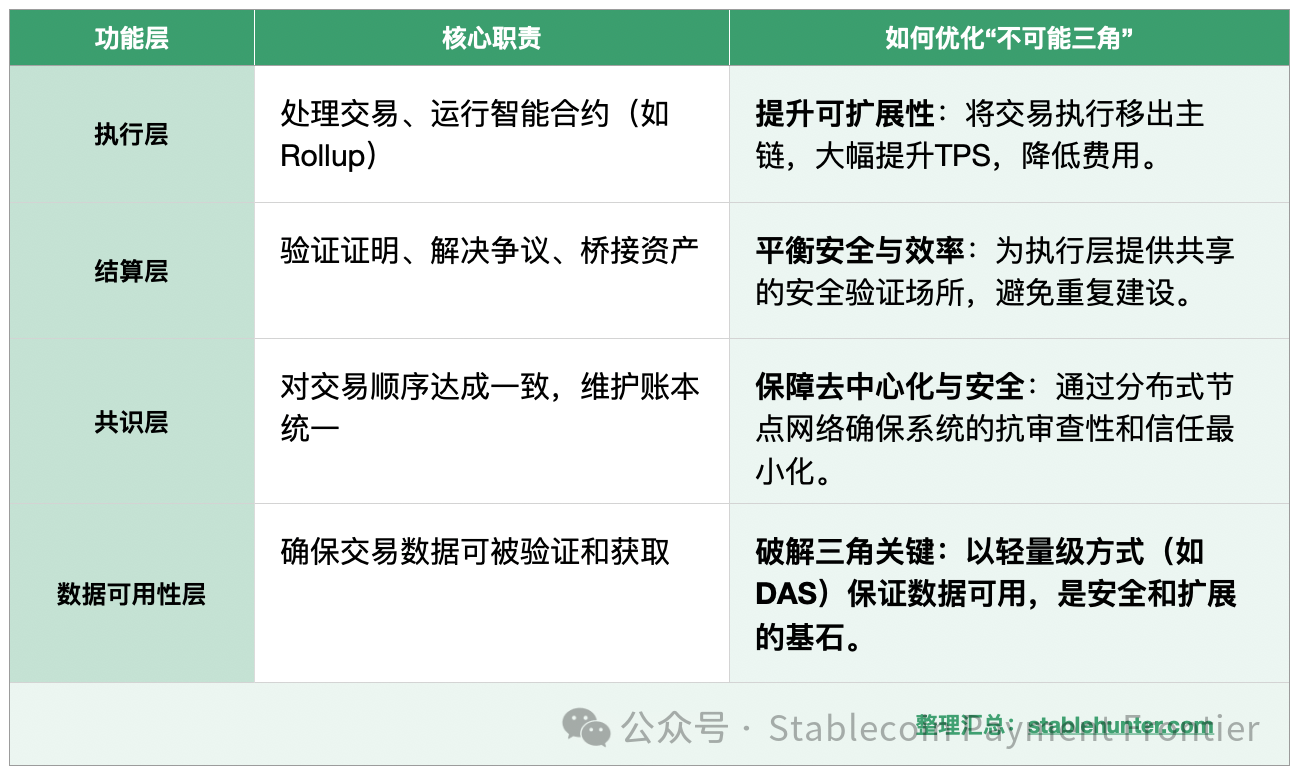Author: Yokiiiya
Modularization is the core trend in the current evolution of blockchain, and it is necessary to clarify its inevitability—how the limitations of monolithic blockchains naturally lead to modular solutions. The advantages brought by "division of labor" should be highlighted through comparative structures, such as how the separation of the DA layer (like Celestia) and the execution layer (various L2s) solves the "impossible triangle" problem.

1. Core Idea: Why is Modularization Needed?
Traditional blockchains (like early Ethereum and Bitcoin) are monolithic blockchains. They function like an independent small workshop, handling all production processes:
Execution: Processing transactions and smart contract computations.
Consensus: Determining which block is valid and ordering them.
Data Availability: Ensuring all transaction data is publicly available for anyone to verify the state.
Settlement: Finalizing transaction results and resolving disputes.
The problem is that this "small workshop" has limited capabilities. When all tasks are assigned to it, it encounters the well-known "blockchain impossible triangle"—struggling to balance decentralization, security, and scalability.
The solution of modular blockchains is to separate these four core functions, assigning them to different, specialized "factories." Through collaborative division of labor, the overall efficient operation of the system is achieved.
2. Detailed Explanation of the "Layering" in Modular Blockchains
Modular design decouples core functions, allowing each layer to focus on what it does best:
Execution Layer: Specifically handles transactions and runs smart contracts, serving as the interface for user interaction.
Settlement Layer: Provides transaction finality, verifies proofs, resolves disputes, and acts as a bridge between different execution layers.
Consensus Layer: Achieves consensus on the order and validity of transactions through a network of nodes, maintaining the consistency of the ledger.
Data Availability Layer: Ensures that transaction data is fully published and available for verification and download, serving as an important cornerstone of security.

3. How Modularization Breaks the "Impossible Triangle"
The modular architecture allows for the separation of functions, enabling independent optimization for each layer, providing a pathway to break the "impossible triangle." For example, the execution layer can pursue high-speed processing, while the consensus and data availability layers focus on security and decentralization.
Modular blockchains, through the idea of specialized division of labor, decouple the four core functions of traditional monolithic blockchains—execution, settlement, consensus, and data availability (DA)—allowing each layer to focus on what it does best, thus providing feasibility for breaking the "impossible triangle." The following table can help you quickly grasp how each layer optimizes for the "impossible triangle":

Celestia is a typical example; it focuses on being a data availability layer, significantly enhancing scalability while ensuring decentralization and security through technologies like Data Availability Sampling (DAS). Rollups (like Arbitrum, zkSync) are successful practices of the modularization concept, transferring transaction execution off-chain (execution layer) while ultimately anchoring data to more secure underlying layers (consensus and data availability layer), thus inheriting the security of the underlying layer while achieving high performance.
4. A Rational Perspective on Modularization
Although the prospects of modular design are broad, it is also necessary to view it rationally:
"Breaking" is about optimizing balance, not an ultimate solution: Modular blockchains tend to represent a more optimal art of trade-offs. It does not aim for a single chain to achieve perfection in all three aspects simultaneously, but rather through architectural adjustments, allows the entire system to achieve higher scalability while maintaining acceptable levels of security and decentralization. The core lies in specialization and collaboration.
New architectures bring new challenges: This decoupling also introduces new complexity issues. For example, the security of communication between layers is crucial. At the same time, the overall complexity of the system increases, raising the understanding threshold for developers and users. Currently, the degree of decentralization of some components in the modular stack (like sorters) still has room for improvement.
Modular blockchains, by decoupling core functions and allowing specialized layers to perform specialized tasks, open a practical path for the scalability of blockchains, bringing us closer to the optimized balance of the "impossible triangle." Of course, this is a continuous evolution rather than a one-time revolution.
免责声明:本文章仅代表作者个人观点,不代表本平台的立场和观点。本文章仅供信息分享,不构成对任何人的任何投资建议。用户与作者之间的任何争议,与本平台无关。如网页中刊载的文章或图片涉及侵权,请提供相关的权利证明和身份证明发送邮件到support@aicoin.com,本平台相关工作人员将会进行核查。


